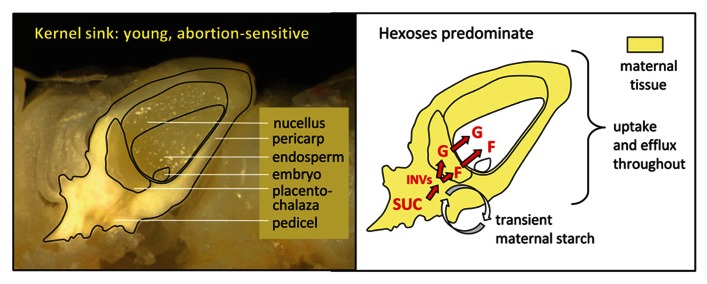FIGURE 3.
Maize kernel sink strength in young, abortion-sensitive ovaries. The left panel shows a fresh, longitudinal view of a maize kernel at eight days after pollination, when maternal tissues predominate in this sink structure. Note the importance of the nucellus and expanding pericarp (fruit wall). The right panel diagrams major contributors to sink strength relative to their spatial distribution. Maternal tissues are shown in yellow to emphasize their dominant role in sink strength, and control over abortion and kernel set at this stage. Like the more mature kernels, sucrose (SUC) in young ovaries is first cleaved by vacuolar and cell wall invertases (INVs) in the pedicel and the placenta-chalaza, and to some extent the newly forming basal endosperm transfer layer. Updates have indicated that collective effects of these INVs are most pronounced in very young kernels, where the hexoses have signaling roles in the cell cycle, cell division, and cell number that markedly enhance ultimate sink strength. Another component of young-kernel sink strength is transient maternal starch, thought to aid maintenance of non-aborting kernels. In addition, continuous efflux and influx of sugars occur throughout maternal tissues, even prior to pollination, highlighting the roles for transporters and effluxers during early development of sink strength in maize kernels. G, glucose; F, fructose.

